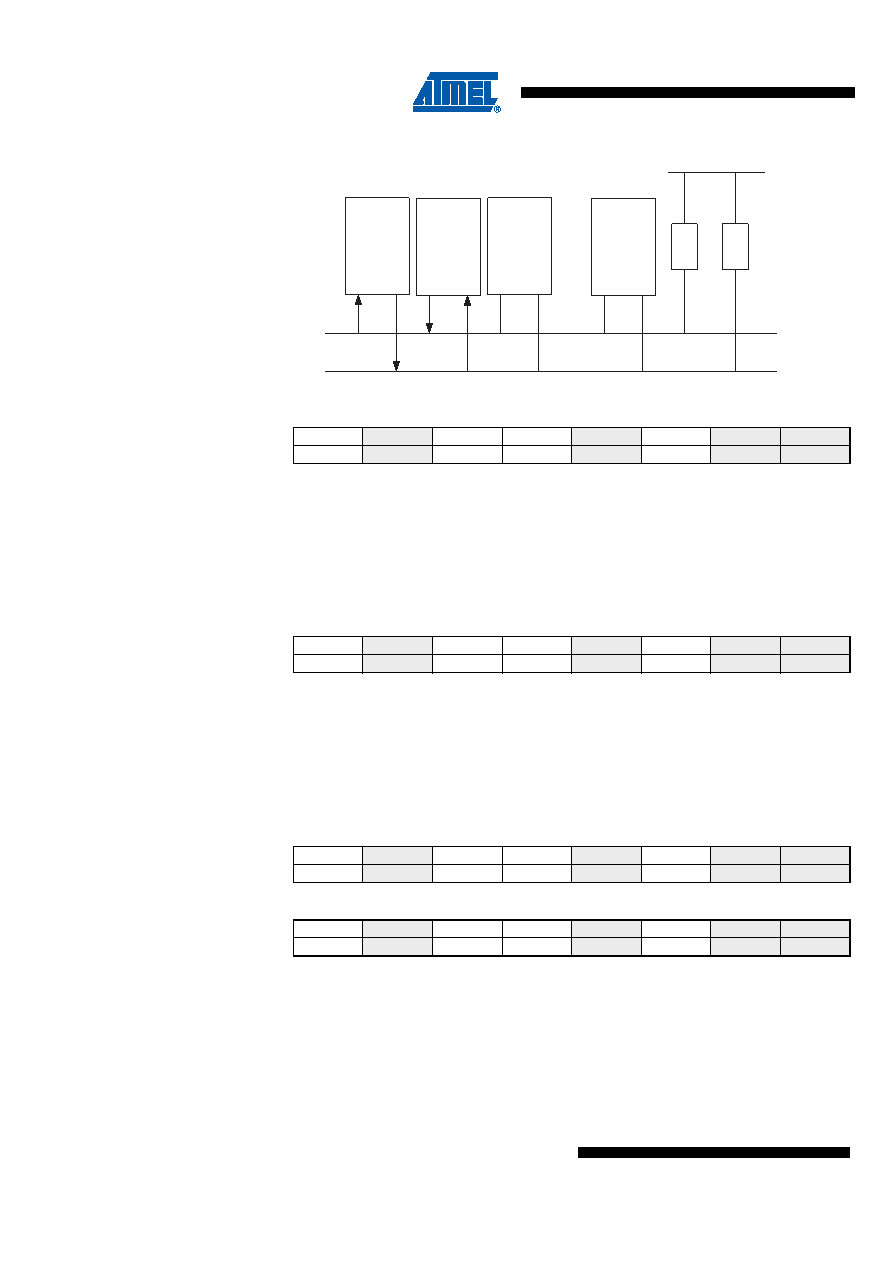- 您現(xiàn)在的位置:買賣IC網(wǎng) > PDF目錄45337 > R80C52CXXX-30 (ATMEL CORP) 8-BIT, MROM, 30 MHz, MICROCONTROLLER, CQCC44 PDF資料下載
參數(shù)資料
| 型號: | R80C52CXXX-30 |
| 廠商: | ATMEL CORP |
| 元件分類: | 微控制器/微處理器 |
| 英文描述: | 8-BIT, MROM, 30 MHz, MICROCONTROLLER, CQCC44 |
| 封裝: | LCC-44 |
| 文件頁數(shù): | 138/340頁 |
| 文件大?。?/td> | 5680K |
| 代理商: | R80C52CXXX-30 |
第1頁第2頁第3頁第4頁第5頁第6頁第7頁第8頁第9頁第10頁第11頁第12頁第13頁第14頁第15頁第16頁第17頁第18頁第19頁第20頁第21頁第22頁第23頁第24頁第25頁第26頁第27頁第28頁第29頁第30頁第31頁第32頁第33頁第34頁第35頁第36頁第37頁第38頁第39頁第40頁第41頁第42頁第43頁第44頁第45頁第46頁第47頁第48頁第49頁第50頁第51頁第52頁第53頁第54頁第55頁第56頁第57頁第58頁第59頁第60頁第61頁第62頁第63頁第64頁第65頁第66頁第67頁第68頁第69頁第70頁第71頁第72頁第73頁第74頁第75頁第76頁第77頁第78頁第79頁第80頁第81頁第82頁第83頁第84頁第85頁第86頁第87頁第88頁第89頁第90頁第91頁第92頁第93頁第94頁第95頁第96頁第97頁第98頁第99頁第100頁第101頁第102頁第103頁第104頁第105頁第106頁第107頁第108頁第109頁第110頁第111頁第112頁第113頁第114頁第115頁第116頁第117頁第118頁第119頁第120頁第121頁第122頁第123頁第124頁第125頁第126頁第127頁第128頁第129頁第130頁第131頁第132頁第133頁第134頁第135頁第136頁第137頁當(dāng)前第138頁第139頁第140頁第141頁第142頁第143頁第144頁第145頁第146頁第147頁第148頁第149頁第150頁第151頁第152頁第153頁第154頁第155頁第156頁第157頁第158頁第159頁第160頁第161頁第162頁第163頁第164頁第165頁第166頁第167頁第168頁第169頁第170頁第171頁第172頁第173頁第174頁第175頁第176頁第177頁第178頁第179頁第180頁第181頁第182頁第183頁第184頁第185頁第186頁第187頁第188頁第189頁第190頁第191頁第192頁第193頁第194頁第195頁第196頁第197頁第198頁第199頁第200頁第201頁第202頁第203頁第204頁第205頁第206頁第207頁第208頁第209頁第210頁第211頁第212頁第213頁第214頁第215頁第216頁第217頁第218頁第219頁第220頁第221頁第222頁第223頁第224頁第225頁第226頁第227頁第228頁第229頁第230頁第231頁第232頁第233頁第234頁第235頁第236頁第237頁第238頁第239頁第240頁第241頁第242頁第243頁第244頁第245頁第246頁第247頁第248頁第249頁第250頁第251頁第252頁第253頁第254頁第255頁第256頁第257頁第258頁第259頁第260頁第261頁第262頁第263頁第264頁第265頁第266頁第267頁第268頁第269頁第270頁第271頁第272頁第273頁第274頁第275頁第276頁第277頁第278頁第279頁第280頁第281頁第282頁第283頁第284頁第285頁第286頁第287頁第288頁第289頁第290頁第291頁第292頁第293頁第294頁第295頁第296頁第297頁第298頁第299頁第300頁第301頁第302頁第303頁第304頁第305頁第306頁第307頁第308頁第309頁第310頁第311頁第312頁第313頁第314頁第315頁第316頁第317頁第318頁第319頁第320頁第321頁第322頁第323頁第324頁第325頁第326頁第327頁第328頁第329頁第330頁第331頁第332頁第333頁第334頁第335頁第336頁第337頁第338頁第339頁第340頁

222
7530J–AVR–03/12
Atmel ATmega48/88/168 Automotive
Figure 19-14. Data Transfer in Master Receiver Mode
A START condition is sent by writing the following value to TWCR:
TWEN must be written to one to enable the 2-wire Serial Interface, TWSTA must be written to
one to transmit a START condition and TWINT must be set to clear the TWINT Flag. The TWI
will then test the 2-wire Serial Bus and generate a START condition as soon as the bus
becomes free. After a START condition has been transmitted, the TWINT Flag is set by hard-
ware, and the status code in TWSR will be 0x08 (See Table 19-3). In order to enter MR mode,
SLA+R must be transmitted. This is done by writing SLA+R to TWDR. Thereafter the TWINT bit
should be cleared (by writing it to one) to continue the transfer. This is accomplished by writing
the following value to TWCR:
When SLA+R have been transmitted and an acknowledgement bit has been received, TWINT is
set again and a number of status codes in TWSR are possible. Possible status codes in Master
mode are 0x38, 0x40, or 0x48. The appropriate action to be taken for each of these status codes
is detailed in Table 19-4. Received data can be read from the TWDR Register when the TWINT
Flag is set high by hardware. This scheme is repeated until the last byte has been received.
After the last byte has been received, the MR should inform the ST by sending a NACK after the
last received data byte. The transfer is ended by generating a STOP condition or a repeated
START condition. A STOP condition is generated by writing the following value to TWCR:
A REPEATED START condition is generated by writing the following value to TWCR:
TWCR
TWINT
TWEA
TWSTA
TWSTO
TWWC
TWEN
–
TWIE
value
1
X1
0
X1
0
X
TWCR
TWINT
TWEA
TWSTA
TWSTO
TWWC
TWEN
–
TWIE
value
1
X0
0
X1
0
X
TWCR
TWINT
TWEA
TWSTA
TWSTO
TWWC
TWEN
–
TWIE
value
1
X0
1
X1
0
X
TWCR
TWINT
TWEA
TWSTA
TWSTO
TWWC
TWEN
–
TWIE
value
1
X1
0
X1
0
X
Device 1
MASTER
RECEIVER
Device 2
SLAVE
TRANSMITTER
Device 3
Device n
SDA
SCL
........
R1
R2
V
CC
相關(guān)PDF資料 |
PDF描述 |
|---|---|
| R80C52CXXX-30 | 8-BIT, MROM, 30 MHz, MICROCONTROLLER, CQCC44 |
| R80C52TXXX-16:D | 8-BIT, MROM, 16 MHz, MICROCONTROLLER, CQCC44 |
| R80C52TXXX-25:R | 8-BIT, MROM, 25 MHz, MICROCONTROLLER, CQCC44 |
| MPC106ARX66CGR2 | PCI BUS CONTROLLER, CBGA304 |
| MPC106ARX83TG | PCI BUS CONTROLLER, CBGA304 |
相關(guān)代理商/技術(shù)參數(shù) |
參數(shù)描述 |
|---|---|
| R80ES11WES | 制造商:UNBRANDED 功能描述:LAMP ENERGY SAVING R80 11W ES |
| R80M | 制造商:Omron Corporation 功能描述: |
| R80P | 制造商:Orion Fans 功能描述:Filter Kit; Retainer only; ABS UL94V-0; Fits 80mm Fan; 83.6mm W; 9.8mm D |
| R80X5200CK | 制造商:Samsung Semiconductor 功能描述:100 Pack 52x80 Minute CD-R Media |
| R8-10 | 制造商:JST Manufacturing 功能描述:8AWG 29.8mm 15mm 制造商:JST Manufacturing 功能描述:Terminal,R8-10 |
發(fā)布緊急采購,3分鐘左右您將得到回復(fù)。